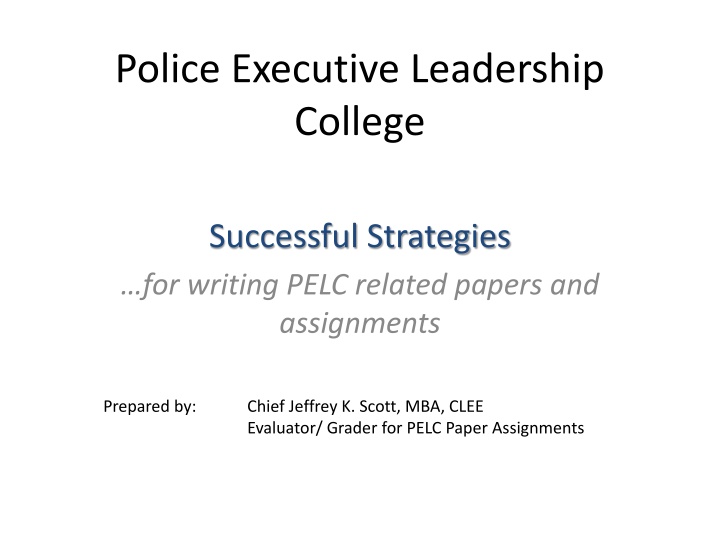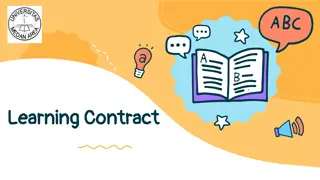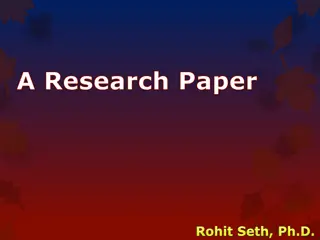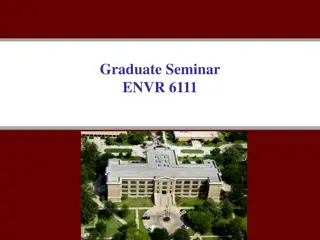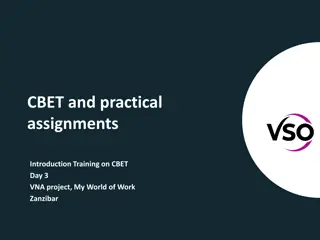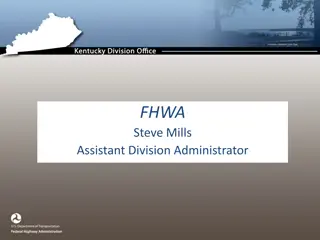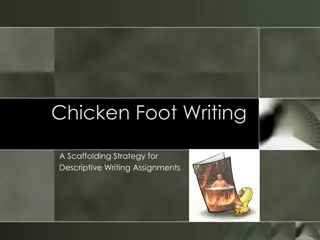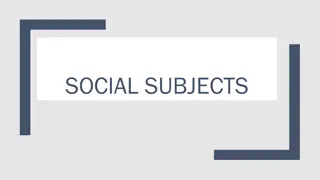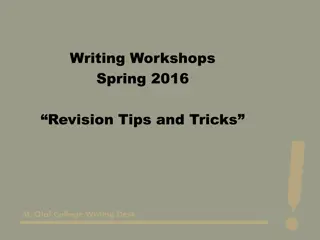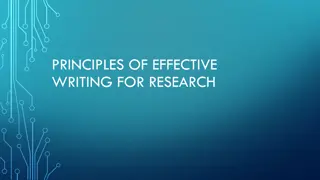Successful Strategies for Writing PELC Papers and Assignments
Crafted by Chief Jeffrey K. Scott, MBA, CLEE, this guide provides a comprehensive approach to excelling in Police Executive Leadership College (PELC) assignments. It covers essential steps, from initial research to polishing the final product, offering insights on foundational work, outlining, data gathering, and ensuring adherence to APA format and grammar rules. With a focus on goals, meticulous writing, and credible sourcing, this resource equips students with the necessary tools for academic success in PELC-related tasks.
Download Presentation

Please find below an Image/Link to download the presentation.
The content on the website is provided AS IS for your information and personal use only. It may not be sold, licensed, or shared on other websites without obtaining consent from the author.If you encounter any issues during the download, it is possible that the publisher has removed the file from their server.
You are allowed to download the files provided on this website for personal or commercial use, subject to the condition that they are used lawfully. All files are the property of their respective owners.
The content on the website is provided AS IS for your information and personal use only. It may not be sold, licensed, or shared on other websites without obtaining consent from the author.
E N D
Presentation Transcript
Police Executive Leadership College Successful Strategies for writing PELC related papers and assignments Prepared by: Chief Jeffrey K. Scott, MBA, CLEE Evaluator/ Grader for PELC Paper Assignments
PELC Paper Grader/Evaluator Chief Jeffrey Scott, CLEE Notre Dame College Police, South Euclid jscott@ndc.edu
Goals Focused Writing and Research Foundational Work and Outlines Sources and Data Gathering Outline to Draft Proofread and Polish Final Product Check your work APA Format Grammar and Punctuation (comma s) Common Errors and final thoughts
Focused Writing and Research Research is a Process Seeking answers and supporting theories You must first draft the question Then seek materials to support your answer Credible Specific Focused Relevant Current
Foundational Work and Outlines Lay the Foundation Read the INSTRUCTIONS for your assignment Read the materials provided for you Assigned Books Assigned Articles Finding other related source support material Take notes Highlight Post-its Tabs Write down initial thoughts or opinions Develop a preliminary thesis
Foundational Work and Outlines Begin to Outline your paper Introductory Statement Points out the main themes you will cover Brief snap-shot of your main body Main Body Specific Identifies: describes the issues Offers solutions, thoughts, or ideas Expands Critical Thinking Is supported by readings or scholarly references Multiple sources
Foundational Work and Outlines Begin to Outline your paper (continued) Conclusion Re-cap of Main Ideas, thoughts and discussion Brief and succinct Emphasis on most critical thoughts and analysis References Develop key scholarly documents Use online tools for proper APA formatting
Sources and Data Gathering Gather your data Brainstorm about your sources Journals and periodicals (industry specific to law enforcement) Police Magazine Law Officer Magazine www.ForceScience.org Assigned Readings Books Articles
Sources and Data Gathering Ensure information is RELEVANT to the topic Stay focused Avoid filler or fluff just to make it look good or meet the length requirement Take notes Helps you avoid wasting time REMEMBER TO CITE the Author or reference PLAGIARISM (properly cite others work) You are LE Officers Maintain INTEGRITY
Outline to Draft Paper Review your materials and notes Develop an IDEA ROAD MAP Place notes in order Add quotes, avoid plagiarism Articulate an informed opinion BE SPECIFIC, narrowed in scope Avoid being too vague or broad stroked Back up your thoughts with scholarly support
Outline to Draft Paper Double check you have met ALL requirements for the paper (read the instructions!) Stay FOCUSED and ORGANIZED Ask yourself Are any questions left unanswered?
PROOFREAD and Polish Pay close attention to the paper s organization Have you covered all the required information, based on the assignment requirements page? Place your thoughts in: Logical order Complement your research Connect everything with effective transitions Be focused Avoid being all over the place or scattered
PROOFREAD and Polish Strengthen your introduction and conclusion Double-check your citations and follow APA Proper APA format http://owl.english.purdue.edu/owl http://www.apastyle.org Insert parenthetical citations with source page CORRECT grammatical and mechanical errors Watch RUN ON sentences and paragraph formations Review your formatting (standard 1 margin rule)
FINAL PRODUCT Check your work Read your paper out loud Listen to the tone and style Does it make sense? Is it logical? Make sure the paper MEETS all the guidelines or requirements
FINAL PRODUCT Check your work Ensure proper APA formatting DEFEND YOUR WORK (citations from scholarly documents) back up your theories Have someone else read your work product Get critiques from others DO NOT WAIT UNTIL THE LAST MINUTE to do your paper
APA Formatting and Style Guide General APA Format Source Reference from website: http://owl.english.purdue.edu/owl
The American Psychological Association (APA) citation style is the most commonly used format for manuscripts in the social sciences. APA regulates: Stylistics In-text citations References
Your paper should: be typed, be double-spaced, have 1 margins, use 12 pt. standard font (ex. Times New Roman, Calibri or Arial), and be printed on standard-sized paper (8.5 x 11 ) papers will be submitted to PELC Grader as a PDF document
Every page of your paper (including title page) should: Include a page header (Title, all caps) in the upper left- hand corner and the page number in the upper right
Your PELC paper should include four major sections: Annotated Bibliography Title page Main Body References
Title Page Page header: (use Insert Page Header) title flush left + page number flush right. Title: (in the upper half of the page, centered) name (no title or degree) + affiliation (university, etc.)
Main Body (Text) Number the first text page as page number 2 Type and center the title of the paper at the top of the page Type the text double-spaced with all sections following each other without a break Identify the sources you use in the paper in parenthetical, in-text citations Format tables and figures
Reference Page Center the title (References) at the top of the page. Do not bold it. Double-space reference entries Flush left the first line of the entry and indent subsequent lines Order entries alphabetically by the surname of the first author of each work
References: Basics Invert authors names (last name first followed by initials) EX: Smith, J.Q. Capitalize only the first letter of the first word of a title and subtitle, the first word after a colon or a dash in the title, and proper nouns. Do not capitalize the first letter of the second word in a hyphenated compound word. EX: The perfectly formatted paper: How the Purdue OWL saved my essay.
Making the Reference List APA is a complex system of citation. When compiling the reference list, the strategy below might be useful: 1. Identify the type of source: Is it a book? A journal article? A webpage? 2. Find a sample citation for this type of source Check a textbook or the OWL APA Guide: http://owl.english.purdue.edu/owl/resource/560/01/
In-text Citation: Basics In-text citations help readers locate the cited source in the References section of the paper. Whenever you use a source, provide in parenthesis: the author s name and the date of publication for quotations and close paraphrases, provide the author s name, date of publication, and a page number
In-Text Citation: Quotations When quoting: Introduce the quotation with a signal phrase Include the author s name, year of publication, and page number Keep the citation brief do not repeat the information
In-Text Citation: Summary or Paraphrase Provide the author s last name and the year of publication in parenthesis after a summary or a paraphrase.
In-Text Citation: Summary or Paraphrase Include the author s name in the signal phrase, followed by the year of publication in parenthesis.
In-Text Citation: Summary or Paraphrase When including the quotation in a summary/paraphrase, also provide a page number in parenthesis after the quotation:
In-Text Citation: Signal Words Introduce quotations with signal phrases, e.g.: According to Xavier (2008), . (p. 3). Xavier (2008) argued that (p. 3). Use such signal verbs such as: acknowledged, contended, maintained, responded, reported, argued, concluded, etc. Use the past tense or the present perfect tense of verbs in signal phrases when they discuss past events.
In-Text Citation: Two or More Works When the parenthetical citation includes two or more works, order them in the same way they appear in the reference list the author s name, the year of publication separated by a semi-colon.
In-Text Citation: Electronic Sources When citing an electronic document, whenever possible, cite it in the author- date style. If electronic source lacks page numbers, locate and identify paragraph number/paragraph heading.
Additional Resources The Purdue OWL: http://owl.english.purdue.edu Composition textbooks Publication Manual of the American Psychological Association, 6th ed. APA s website: http://www.apastyle.org
Conquering the Comma Source Reference from website: http://owl.english.purdue.edu/owl
What is a Comma? , A comma is a punctuation mark that indicates a pause is needed in a sentence. Commas help to clarify meaning for the reader.
Sentence Structure: Commas in a Series Commas should be placed in series of words, phrases, or clauses.
Commas with Adjectives Use commas to separate adjectives that provide an equal description of a noun. The test: Can you put and between the adjectives? Can they be described in reverse order? If yes, use a comma.
Commas with Adjectives Comma s, have a tendency, to be overused, misused, or misplaced, and can be, a distraction, to the reader, or evaluator, of your paper, and, this, can be avoided, by knowing, the rules, for using, comma s, in your paper. GET THE POINT?! ,,,,,,,,,,
Where to Go for More Help Purdue University Writing Lab http://owl.english.purdue.edu Email brief questions to OWL Mail: https://owl.english.purdue.edu/contact/owlmailtutors
FINAL THOUGHTS Be focused in your writing DO YOUR HOMEWORK DO YOUR Research Proofread and Polish your work Follow APA Format and guidelines for each paper Cite your work and authors Use Scholarly Sources OFTEN to back up your thoughts and statements
FINAL THOUGHTS Avoid Common Errors Spelling Grammar Sentence structure Paragraph formations Run-on sentences Lack of focus or thought Failing to follow directions Over-use of personal phrases or statements e.g. SLANG terms
FINAL THOUGHTS Turn in your work BEFORE or by the deadline Ensure papers are turned in as a PDF PROOFREAD your paper Have others proofread your work FOLLOW the DIRECTIONS!
QUESTIONS ? Contact Information: Chief Jeffrey K. Scott Email: jscott@ndc.edu Cell: 419-528-8876 Office: 216-373-5407
